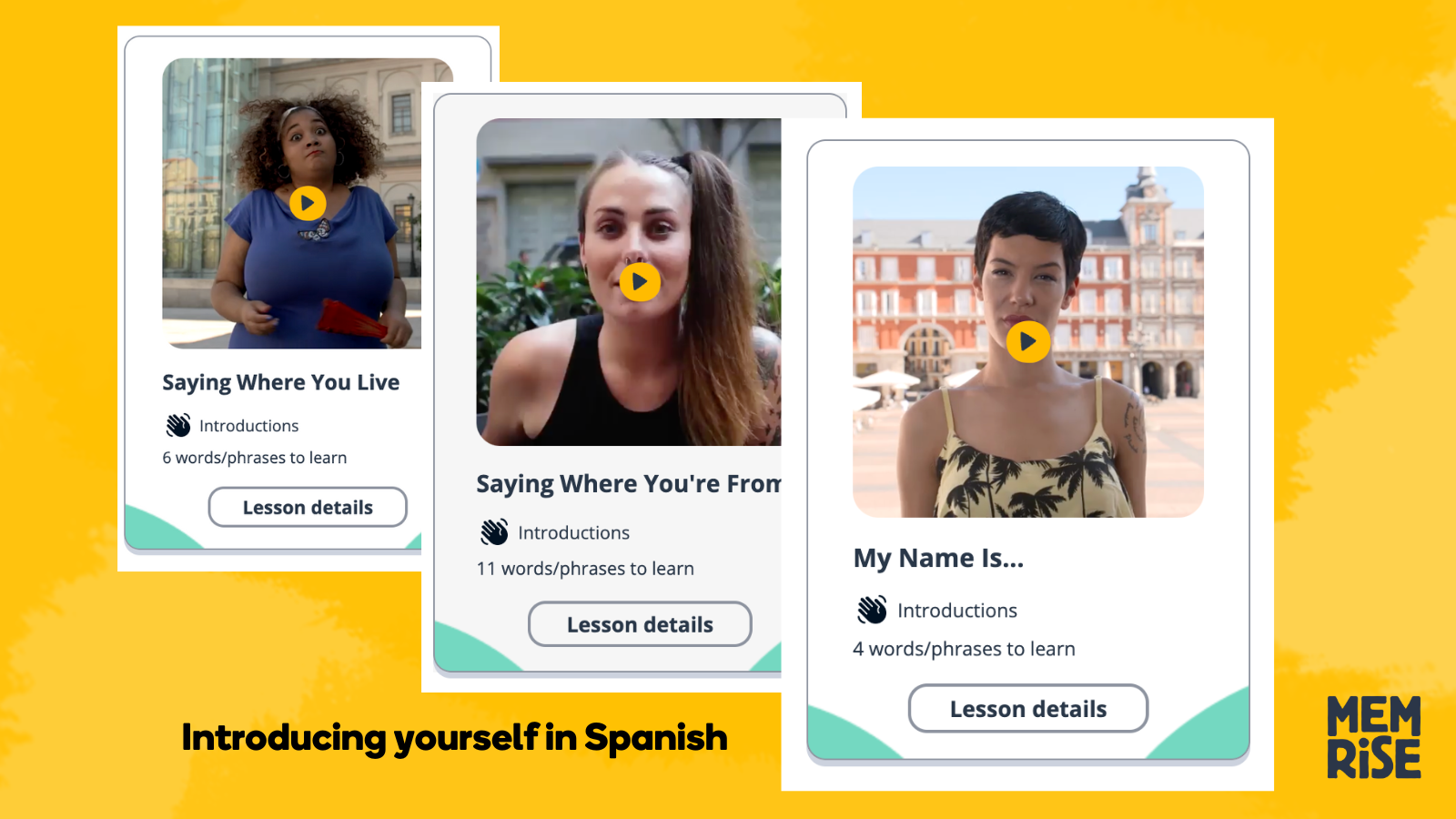Introducing yourself is the first step in any interaction, the key that unlocks the doors to meaningful connections and friendships. When it comes to learning a new language, Spanish is no exception. In this blog post, we'll explore the importance of mastering various aspects of introducing yourself and delve into different aspects of this topic that will help you navigate social interactions with confidence.
If you want to master Spanish introductions, be sure to check our Spanish introductions page, you can browse the most popular lessons we have on this topic, from saying your name, revealing where you're from, sharing where you live, discussing your age, or engaging in formal introductions, we've got you covered.
Why Are Introductions Crucial?
Introductions may seem like small talk, but they're your secret weapon in the world of Spanish and a key to meaningful connections. They set a positive tone, break the ice, and come in handy in various situations, from travel to business meetings.
Saying Your Name: "¿Cómo te llamas?"
Let's kick off our journey into introductions with something personal – your name. Saying your name in Spanish is like extending a friendly hand to the person you're meeting. It's simple, yet it sets the stage for a warm and engaging interaction.
When you start a conversation in Spanish, it's customary to lead with "¿Cómo te llamas?" which translates to "What's your name?" This friendly greeting shows you're interested in getting to know the other person.
Memrise lessons not only help you learn key phrases, we also show you how real native speakers speak them and you can also rehearse how you introduce yourself in Spanish by practicing with MemBot, our AI language tutor.
Learning to say your name in Spanish isn't just about words; it's about connecting with the culture. In many Spanish-speaking countries, names hold special meanings and traditions. Sharing your name can lead to fascinating conversations about culture and identity.
As you progress in your Spanish learning journey, you'll discover that names can be quite diverse and unique. Whether you have a common name or something less typical, be prepared to hear and learn various names in return. It's a fantastic way to expand your vocabulary.
Saying Where You Are From and Where You Live: "¿De dónde eres?" and "¿Dónde vives?"
Let's dive into two essential aspects of introductions: where you're from and where you live. It's all about sharing a bit of your background in a friendly and casual manner.
"¿De dónde eres?" (Where are you from?): This question lets you reveal your place of origin. Whether it's your country, city, or region, keep it simple. For instance, "Soy de los Estados Unidos" (I'm from the United States) or "Soy de Nueva York" (I'm from New York).
"¿Dónde vives?" (Where do you live?): Here, you get to share your current residence. It could be a city, a neighborhood, or even something unique like "Vivo en una casa frente al mar" (I live in a house by the sea).
The beauty of these introductions is that they're not just about facts; they're conversation starters. Sharing where you're from can lead to chats about culture, travel, and shared experiences. Talking about where you live might reveal hidden gems, common interests, or local insights.
Talking About Your Age: "¿Cuántos años tienes?"
Now, let's dive into a topic that often comes up during introductions – your age. In Spanish, it's a breeze to share this personal detail, and it's an excellent way to connect with others. Here's how it works:
When someone asks, "¿Cuántos años tienes?" (translation: "How old are you?"), you can respond with your age, simple and straightforward. For example, "Tengo veinticinco años" (I am twenty-five years old).
The cool thing about discussing your age in Spanish is that it's not just about numbers; it's a chance to bond over shared experiences. You might find someone who's the same age, leading to conversations about common interests or even childhood memories.
Also, knowing how to inquire about someone's age politely and respond with ease is a valuable skill. You can ask, "¿Y tú?" (And you?) to keep the conversation flowing and learn more about the person you're talking to.
But remember, age isn't the only thing that defines you. It's just one part of your unique story. Whether you're a young adventurer or someone with a wealth of experiences, your age adds depth to your introduction, helping you connect with people from all walks of life.
Formal Introductions: "Encantado/a de conocerte."
Now, let's explore formal introductions, a key aspect of European Spanish etiquette, especially in professional and respectful settings.
Why Formal Introductions Matter:
In these contexts, a well-executed introduction demonstrates respect and professionalism. Whether you're meeting a potential employer, a business partner, or someone you highly respect, making a positive first impression is crucial.
Phrases and Etiquette:
- "Encantado/a de conocerte." This translates to "Nice to meet you" and is a polite and common way to initiate a formal introduction.
- "Mucho gusto." Another way to say "Nice to meet you," equally appropriate in formal settings.
In formal situations, consider these tips:
- Use Titles and Surnames: Address individuals with their title and surname, like "Señor García" or "Doctora López."
- Firm Handshakes: A professional handshake with eye contact and a sincere smile is standard.
- Maintain Formal Language: Address the person as "usted" instead of the informal "tú."
Unlocking Connections in European Spanish
Introductions are your gateway to forming meaningful connections, enriching your language experience, and opening doors to memorable conversations. So, as you continue your Spanish adventure, remember that introductions are more than just words; they're the bridges to connections that will enhance your journey in wonderful ways. If you're eager to practice and explore Spanish introductions further, be sure to visit this Memrise page on Spanish introductions.
¡Hasta pronto! (Until next time!)










